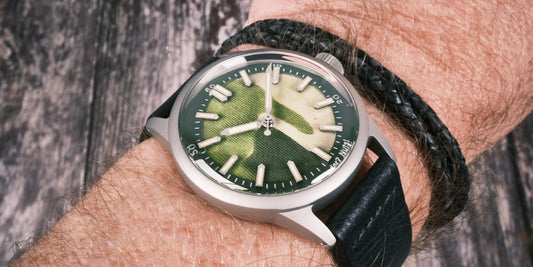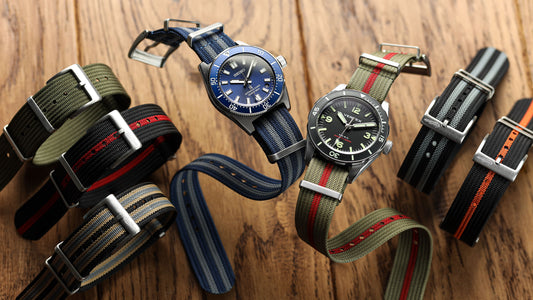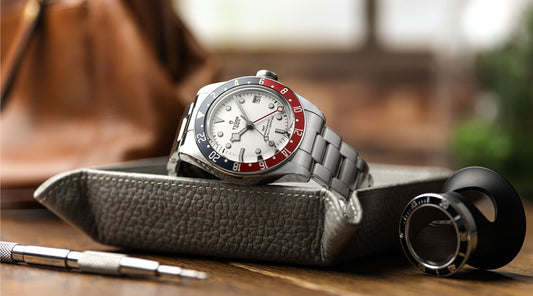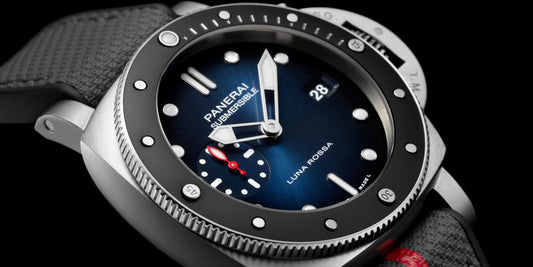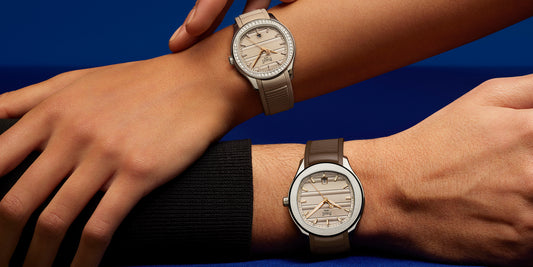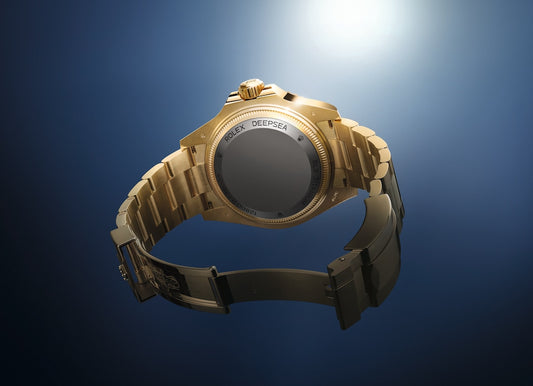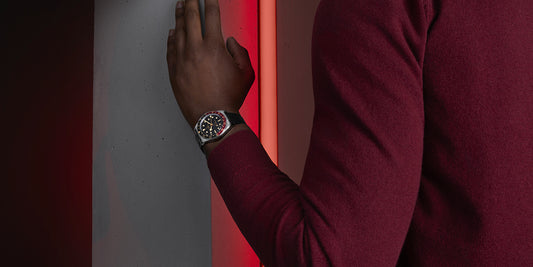We've already explored why the Speedy was fit for the job, but what truly makes it so special?
In 2008 I was living in Abu Dhabi. I was excited about one particular flight home to the UK, as Ron Howard’s masterpiece documentary In the Shadow of the Moon was showing on Etihad Airways. I had missed the film in the cinema and was looking forward to intimate interviews with all of the Apollo moonwalkers and unseen footage of the missions.
I had already cleared with my wife that I could buy an Omega Speedmaster and she suggested I check the Omega booth at the airport, just in case they had one duty-free. They did….and as I settled down to watch the greatest Apollo documentary ever made I was wearing a new calibre 1861, Speedmaster Moonwatch...
The Speedmaster is a great watch to own. It’s supremely legible and the Super Luminova burns brightly through the night. It’s not a certified chronometer and not the most accurate watch I own but it has the reassurance of being hand wound and every 48 hours; that’s a nice experience. It looks amazing on any strap; Military nylon, leather, rubber. I have recently bought an accurate recreation of the Apollo 11 white and black Velcro strap with the NASA serial number on it. Not the most comfortable I confess but the watch looks very authentic. My favourite look currently is a ZULUDIVER Marine Nationale with a white stripe which perfectly complements the stark white hands.
If you are lucky enough to own a Speedy with Hessalite Plexiglass crystal rather than sapphire you will notice that it scratches very easily. NASA developed Hessalite to not shatter if impacted. It will crack across its width but due to the unique compound, no particles will escape. In zero-G, even the tiniest fragment of glass could slip behind a master switch in the Lunar Module and spell disaster. The flipside with Hessalite is that it will scratch even if you look at it! However, a solution is at hand.
Put the smallest drops of a well know silver or brass polish in the centre of the lens, rub this in with a cloth, and wipe off. It will remove all the scratches. It looks scary but trust me – it works.
The invention of Hessalite is just one small part of how seriously NASA took the addition of a chronometer to the space equipment inventory. The prospect of landing men on the Moon, as decreed by President Kennedy, had become a serious business. Time was pressing to beat the Russians but every precaution had to be taken as an American death in space could spell the end of Apollo.
Gemini had been a success and most of its astronauts would go on to Apollo. Each Gemini mission sought to try out a hitherto unknown process such as docking in space. This was essential if the planned Lunar Module was to re-join with the Command Service Module after a successful Moon landing.
In 1967 when the crew of Apollo 1 began embarking on pre-flight tests we seemed to be on the cusp of the greatest adventure but tragically the most feared disaster did strike when a fire in the 100% oxygen atmosphere of the capsule killed all three astronauts, Gus Grissom from Gemini, Ed White who completed the iconic spacewalk and Roger Chaffee.
The next five Apollo rockets all flew with no crew to ensure that they were safe in the critical stages of the flight; lift-off, separation, Earth orbit and flight to the Moon (known as Trans-lunar Injection or TLI). By the time the crew of Apollo 7 were ready for launch, there was a palpable sense of tension – the flight had to succeed. On board was Wally Shirra who flew with the first Omega Speedmaster in space. On this mission, he, along with Donn Eisele and Walt Cunningham wore the approved NASA Omega reference 145.012. And this watch would accompany every Apollo astronaut right up to the last man to set foot on the Moon, Gene Cernan in 1972 as commander of Apollo 17.

Wally Shirra with his Speedy proudly on wrist - NASA [Public domain], via Wikimedia Commons
Missions 8 to 10 completed every stage of a Moon landing without actually touching down, culminating in 10 which flew all the way to the Moon, separated the Lunar Module which flew within 60 miles of the surface and then re-docked with the Command Module and returned to Earth. The mission went without a hitch and in 1969 it was planned that Apollo 11 would attempt a landing.
When The Eagle eventually landed on Sea of Tranquillity on 20th July 1969 both Neill Armstrong and Edwin Buzz Aldrin wore Speedmaster Professionals on a Velcro strap. It was always assumed that Armstrong’s Omega would be the first on the moon but prior to the historic first steps he removed the Omega and hung it on the cockpit panel of the Lunar Module. Such a ship had never actually taken off before from a low gravity body such as the moon. This was the only stage previous missions could not test.
Fearing the critical internal chronometers in the capsule may fail he judged that he could fly the craft manually as long as he had an accurate method of measuring lift off and engine burn times. Armstrong’s Speedmaster was left behind as a backup should such a technical failure happen. Therefore Buzz Aldrin’s Speedmaster was the first on the Moon.

NASA / Neil A. Armstrong [Public domain],via Wikimedia Commons
The watch performed better than expected and accompanied all other missions to the moon – one of the clearest images of it was taken on the wrist of Alan Bean during Apollo 12. While 11 had simply landed 12 set out to show that NASA could land at a specific site. The old Surveyor 3 probe was deemed to be a suitable target and the crew managed to land the Yankee Clipper Module just 600m away from the early 1960s probe. An amazing photograph of Bean taking samples near the probe was taken by Pete Conrad which clearly shows the Speedmaster over his pressure suit.

Alan Bean collecting samples near the probe - NASA Charles Conrad Jr [Public domain],via Wikimedia Commons
It was on Apollo 13 that the Speedmaster would achieve legendary status. The problems of Apollo 13 are well documented but it is not widely known that the crew only made it home thanks to an Omega. After an explosion crippled the ship during TLI, a decision was made to abort the planned landing at the Fra Mora Highlands. With the Command Module suffering unknown damage Cdr. Jim Lovell, Fred Haise and Jack Sweigert crammed into the Lunar Module Aquarius as a lifeboat. They flew around the moon and after orbit required a precise 14-second burn of the Lunar Module engine to get them on track to Earth. The main problem was that the entire ship was critically short of power and the internal chronometers were either dead or only working sporadically. While Lovell and Haise piloted and engaged the main rocket Sweigert timed the 14 seconds on his Speedmaster.
Both the watch and crew were pinpoint accurate and the burn propelled Apollo 13 at the specific speed to enter Earth’s atmosphere. Such esteem was the watch held in that Omega was granted the Snoopy Award – NASA’s highest accolade for a piece of technical equipment. Today Omega recognises this achievement with an Apollo 13 Snoopy special edition Speedmaster.

Astronaut David R. Scott, Apollo 15 commander. [Public domain], via Wikimedia Commons
Omega’s next notable mission came with Apollo 15 – but for all the wrong reasons. Like most landings, 15 had three moonwalks (EVAs) planned. On EVA2 Cdr. Dave Scott’s Speedmaster failed to cope with the extremes in temperature when he was driving the new Lunar Rover from sunlight into shade. On returning to the Lunar Module he noticed that the Hessalite crystal had popped off leaving the watch exposed and ruined by dust. All astronauts carried a backup watch but what was not widely known until 2016 was that Dave Scott carried a unique Bulova Moonwatch Chronometer.
The Original Bulova Moonwatch -Image credit RR Auction
Bulova already had a critical relationship with NASA. Every clock in NASA capsules was actually made by Bulova using its patented Accutron mechanism. Quartz watches operate by passing a current through a quartz crystal shaped like a tuning fork. The oscillations of the crystal give the watch its accuracy. Bulova’s NASA certified movement in the capsules had a triple-pronged fork which vibrated at a much higher frequency than a normal watch or clock and was capable of unparalleled accuracy. But Bulova were keen to get a watch actually on the Moon and made a one-off model for Dave Scott as his backup watch. This is what Scott used on EVA3 on Apollo 15. The watch performed perfectly and was every bit as good as the Omega. All Omegas which flew to the moon were US Government property so went to museums or NASA HQ.
$1.6 million worth of watch right there - Image credit RR Auction
The Bulova was given to Scott and disappeared from worldview, soon to become an urban legend. Then in 2015 Scott astounded the world by revealing the watch and offering it for auction; still with moon dust trapped in the Velcro. Showing significant wear from just 4 hours and 50 min of EVA this unique watch still sold for $1.6 million.
The watch was a beautiful design, more simple and less cluttered than the Speedmaster but very similar in operation. The chrono-push buttons were bigger to allow for easy access with bulky space gloves. The watch was automatic and still functional having been kept in a box since 1971. The lucky buyer is unknown but for those of us without a disposable $1.6m Bulova thankfully released a copy of their Moonwatch in 2017.
The new Moonwatch is a stunning piece which faithfully replicates the design of the now famous Apollo 15 watch. It comes in a tasteful presentation box with two straps, one leather and one a NASA fabric style. It has a good batch of papers and a smart brochure telling the history of the watch. The case back of the Bulova is nicely engraved with Apollo 15 landing details making it every bit as desirable as the Omega.
But for me, the best element of the watch is that Bulova made a decision to equip it with a modern 262kHz Precisionist movement which derives from the NASA Accutron. It’s like owning a Moonwatch with a Lunar module chronometer movement. Genius on the part of Bulova! Bulova guarantees an accuracy of +/- 10 seconds a year which beats Breitling’s Superquartz by 5 seconds.
I am informed (although I cannot corroborate) that only 250 of these Bulovas came to the UK and as I reached my 50th year in July 2018, half a century after my father took me in his arms to look at the Moon, my wife surprised me with one for my birthday. The perfect present for an Apollo fan.
It is hard to summarise the significance of watches in the sphere of space travel. The intensive testing that the Omega (and secretly the Bulova) were subjected to – and passed – typify the level of expertise which allowed allow us to walk on another celestial body. When we strap on a space watch it connects us still to that era when anything seemed possible; when human adventure was boundless. And the Omega is still used today on the International Space Station.
Although other watches have since been into space such as the Omega Speedmaster Skywalker X33, the Fortis and even G-Shocks, there will only ever be one iconic space watch. It is the Omega Speedmaster Professional which shared mankind’s greatest achievement.
Whatever developments are made in the field of space chronometers in the future the engraving on the case of my original Speedy can never be challenged; “Flight qualified by NASA for all manned space flights. The first watch worn on the Moon”.









